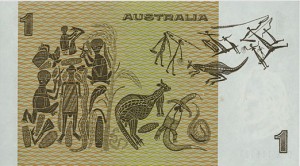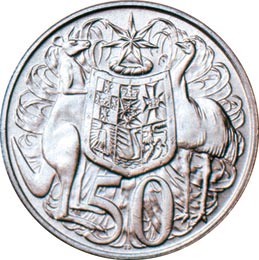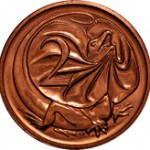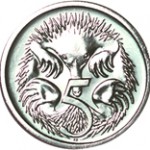Feb 14 2016
Pounds, Sovereigns, Royals, Kwids and Dollars – the path to decimal currency
Australia converted to decimal currency 50 years ago today, on 14th Februay 1966
We were one of the last countries in the world to do so. Russia was first in 1704, France in 1795. USA’s initial currency after independence was decimal, their dollar first minted in 1792. Canada switched to dollars in 1854, despite objections from Britain, who wanted the Canadian ‘dollar’ to be known as the ‘Royal.’ New Zealand followed the year after us, but the UK persisted longer than we did, persisting with with Pounds, Shillings and Pence till 1971.
The change to decimal based currency was driven by the complications of calculating in the pounds / shillings / pence system.
 Currency was written as £4-8-3d = 4 pounds 8 shillings and 3 pence.
Currency was written as £4-8-3d = 4 pounds 8 shillings and 3 pence.
There were 20 shillings in one pound.
There were 12 pence in a shilling.
The penny was further sub-divided into two halfpennies or four farthings (quarter pennies).
One penny was written as 1d.
A shilling as 1s.
Three pence were known as thruppence, 6 pence as sixpence, and a shilling (12 pence) as a bob.
2 shillings were called a florin, and 5 shillings was equal to one Crown. A guinea was 1 pound and one shilling, or 21 shillings.
Phew.

The decision to change to decimal in Australia was a long time coming. Soon after federation, in 1904, a Decimal Currency Select Committee recommended decimalisation, using a ‘sovereign’ consisting of 10 florins. But Britain was strongly opposed to any change, and the decision was delayed.
Public opinion was ahead of offical decision making, particularly after soldiers were exposed to the benefits of decimal systems when travelling in both world wars.
 In 1958 the Decimal Currency Committee again recommend that decimal currency be introduced. The decision was finally made in 1963 and a date set for February 1966.
In 1958 the Decimal Currency Committee again recommend that decimal currency be introduced. The decision was finally made in 1963 and a date set for February 1966.
The initial legislation called for a 10 Shilling/100 cent system. A public competition to name the major unit suggested Australian names such as the Austral, Emu, Koala, Digger, Oz, Boomer, Roo, Kanga, Kwid and Dinkum.

In 1963 treasurer Harold Holt announced that the government had rejected all these suggestions. Our unit of currency would be known as ‘The Royal’, as encouraged by Britain and preferred by prime minister Robert Menzies. The other coins would be the crown (50c), the florin (20c) and shilling (10c).
This didn’t go down too well – at all. The newspapers were filled with scorn for the suggestion, and opinion polls showed 95% disapproval of ‘the Royal’.
Holt got the message and three months later announced that the major Australian unit of currency would be known as the Dollar, and the minor unit as the Cent.
Pity – we should have gone with the Kwid.
The coins were designed by Stuart Devlin – and I think he did a magnificent job. They still look modern 50 years later.
They were the same size as the existing coins of corresponding value. 10c = 1 shilling, 5c= 1 sixpence. The 50c piece was round until 1969, when it was replaced with the 12 sided coin we now know.
 Polymer (plastic) banknotes were first introduced in 1988, using technology developed in Australia. A complete set of plastic banknotes has been available since 1996. 7 other countries, including Canada and New Zealand, now also only use Polymer banknotes.
Polymer (plastic) banknotes were first introduced in 1988, using technology developed in Australia. A complete set of plastic banknotes has been available since 1996. 7 other countries, including Canada and New Zealand, now also only use Polymer banknotes.
$1 coins were introduced in 1994, and $2 coins in 1998. 1c and 2c coins were removed from circulation in 1992. (thank goodness – it is very annoying in the USA getting 1c coins in change).
You can bet your bottom Kwid that the 5c coin will soon follow the 1c and 2c out the door.
‘Dollar Bill’ lead the information campaign for the introduction of decimal currency. This video also demonstrates the intricacies of working with the old system.
 A Valentine’s Day Present
A Valentine’s Day Present

 RSS - Posts
RSS - Posts


Leave a Reply